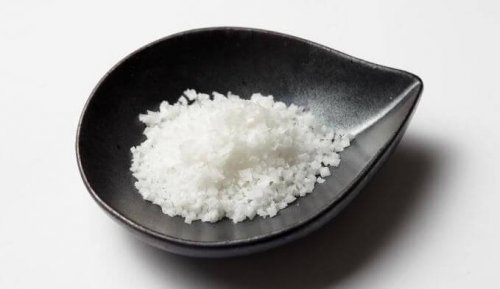Food Additives: Types, Advantages, and Disadvantages

Food additives are substances that are added to food to maintain or improve freshness, taste, texture, and appearance. We need to ensure that the food additives that we consume are not harmful to human health.
Keep reading to learn more about the types, advantages and disadvantages of each food additive.
In internationally marketed foods, additives can only be used after they’ve been evaluated and declared as safe to consume. This job falls to the Joint FAO/WHO Expert Committee on Food Additives. This committee forms the international body that’s responsible for food additive safety.
Common food additives
Most noteworthy is that there are many types of food additives, some of which are even used in household kitchens.
The most common ones are:
- Salt: for dried and salted meats or fish.
- Sugar: in jams and jellies.
- Sulfur dioxide: for wine.

Types of food additives
- Sweeteners: substances that give food a sweet taste.
- Dyes: substances that add color to food.
- Preservatives: substances that help to increase the shelf life, as they protect food from pathogenic microorganisms.
- Antioxidants: substances that help to increase shelf life by protecting food from oxidation.
- Solvents: substances that dissolve and dilute an additive.
- Acidulants: substances that give food an acidic taste.
- Defoamers: substances that reduce the formation of foam.
- Loading agents: substances that increase the volume of a product.
- Emulsifier: substances that make it possible for two immiscible elements—water and oil, for example—to mix.

- Hardeners: substances that keep the tissues of fruits or vegetables firm or crunchy.
- Flavor enhancers: substances that increase the flavor of a product.
- Gellants: substances that add texture to a food product by forming a gel.
- Moisturizers: substances that prevent food from drying.
- Gasifiers: substances that release gas and thereby increase the product’s volume.
- Sequestrants: substances that form chemical complexes with metal ions.
- Stabilizers: substances that make it possible for food to maintain a certain state.
- Thickeners: substances that increase food thickness.
Advantages of food additives
Some of the main advantages of using food additives are:
- They extend the shelf life and guarantee the safety of food.
- In the case of meats, nitrite prevents the growth of bacteria.
- The propionates in bread and the sorbates in cheese, slow the growth of fungi.
- Colorants and flavorings improve the appearance and flavor of foods.
- Some additives help to maintain food’s nutritional value.
- By reducing food deterioration, we’re able to have seasonal foods available all year.
Disadvantages of food additives
Some of the main disadvantages of food additives are:
- Asthmatics should avoid sulfites, as these can cause asthma attacks.
- Some additives contain gluten. This means that people suffering from celiac disease cannot eat them.
- Nitrates can be toxic and increase the risk of forming carcinogenic compounds.

- Some low-calorie sweeteners, such as aspartame, aren’t tolerated by patients with phenylketonuria.
- Preservatives can irritate the intestines, causing diarrhea, internal bleeding, or enlargement of the kidney or liver.
- Some additives may increase the risk of allergies.
- Excessive amounts of sorbitol (sweetner) is not recommended for children and can cause diarrhea and stomach gas.
Food additives are substances that are added to food to maintain or improve freshness, taste, texture, and appearance. We need to ensure that the food additives that we consume are not harmful to human health.
Keep reading to learn more about the types, advantages and disadvantages of each food additive.
In internationally marketed foods, additives can only be used after they’ve been evaluated and declared as safe to consume. This job falls to the Joint FAO/WHO Expert Committee on Food Additives. This committee forms the international body that’s responsible for food additive safety.
Common food additives
Most noteworthy is that there are many types of food additives, some of which are even used in household kitchens.
The most common ones are:
- Salt: for dried and salted meats or fish.
- Sugar: in jams and jellies.
- Sulfur dioxide: for wine.

Types of food additives
- Sweeteners: substances that give food a sweet taste.
- Dyes: substances that add color to food.
- Preservatives: substances that help to increase the shelf life, as they protect food from pathogenic microorganisms.
- Antioxidants: substances that help to increase shelf life by protecting food from oxidation.
- Solvents: substances that dissolve and dilute an additive.
- Acidulants: substances that give food an acidic taste.
- Defoamers: substances that reduce the formation of foam.
- Loading agents: substances that increase the volume of a product.
- Emulsifier: substances that make it possible for two immiscible elements—water and oil, for example—to mix.

- Hardeners: substances that keep the tissues of fruits or vegetables firm or crunchy.
- Flavor enhancers: substances that increase the flavor of a product.
- Gellants: substances that add texture to a food product by forming a gel.
- Moisturizers: substances that prevent food from drying.
- Gasifiers: substances that release gas and thereby increase the product’s volume.
- Sequestrants: substances that form chemical complexes with metal ions.
- Stabilizers: substances that make it possible for food to maintain a certain state.
- Thickeners: substances that increase food thickness.
Advantages of food additives
Some of the main advantages of using food additives are:
- They extend the shelf life and guarantee the safety of food.
- In the case of meats, nitrite prevents the growth of bacteria.
- The propionates in bread and the sorbates in cheese, slow the growth of fungi.
- Colorants and flavorings improve the appearance and flavor of foods.
- Some additives help to maintain food’s nutritional value.
- By reducing food deterioration, we’re able to have seasonal foods available all year.
Disadvantages of food additives
Some of the main disadvantages of food additives are:
- Asthmatics should avoid sulfites, as these can cause asthma attacks.
- Some additives contain gluten. This means that people suffering from celiac disease cannot eat them.
- Nitrates can be toxic and increase the risk of forming carcinogenic compounds.

- Some low-calorie sweeteners, such as aspartame, aren’t tolerated by patients with phenylketonuria.
- Preservatives can irritate the intestines, causing diarrhea, internal bleeding, or enlargement of the kidney or liver.
- Some additives may increase the risk of allergies.
- Excessive amounts of sorbitol (sweetner) is not recommended for children and can cause diarrhea and stomach gas.
All cited sources were thoroughly reviewed by our team to ensure their quality, reliability, currency, and validity. The bibliography of this article was considered reliable and of academic or scientific accuracy.
- MedlinePlus. Aditivos alimentarios. Enciclopedia Médica. https://medlineplus.gov/spanish/ency/article/002435.htm
- Organización Mundial de la Salud (OMS). Aditivos alimentarios. https://www.who.int/es/news-room/fact-sheets/detail/food-additives
- Villegas, Teresa Guerrero, & Flores, Galo Mora. (2014). Posibles riesgos para la salud debido al consumo de aspartame. Enfoque UTE, 5(2), 1-13. https://doi.org/10.29019/enfoqueute.v5n2.36
This text is provided for informational purposes only and does not replace consultation with a professional. If in doubt, consult your specialist.








